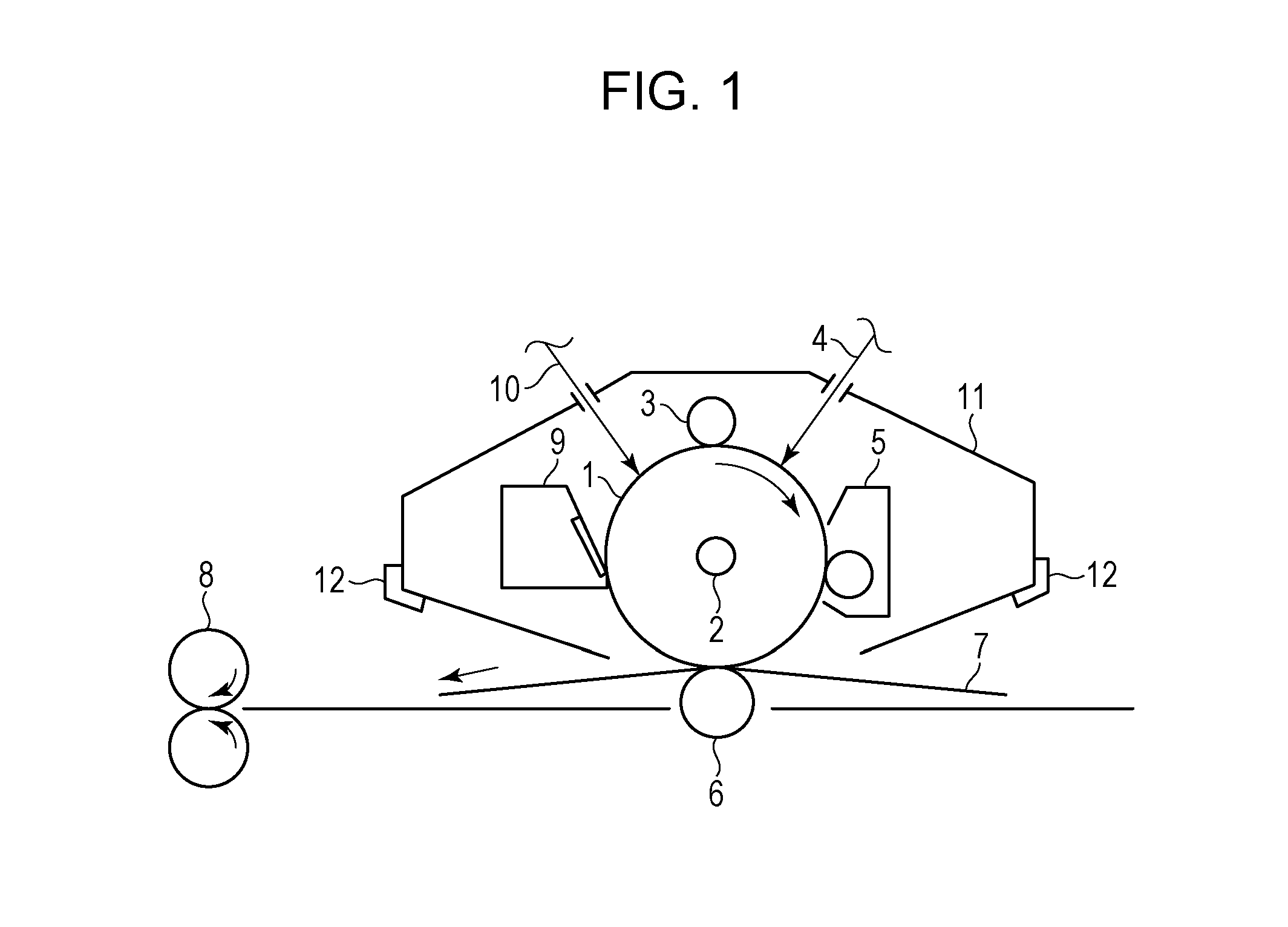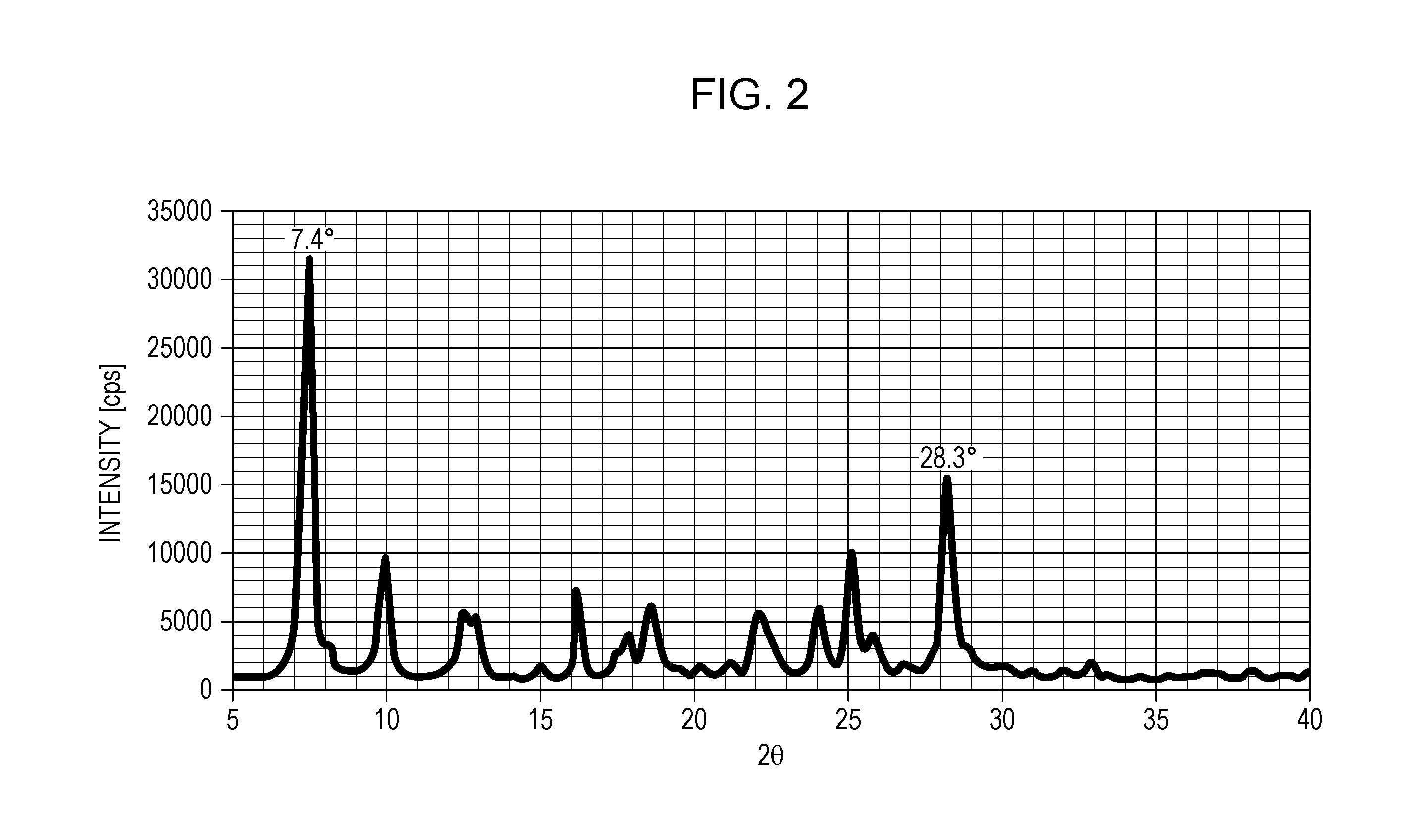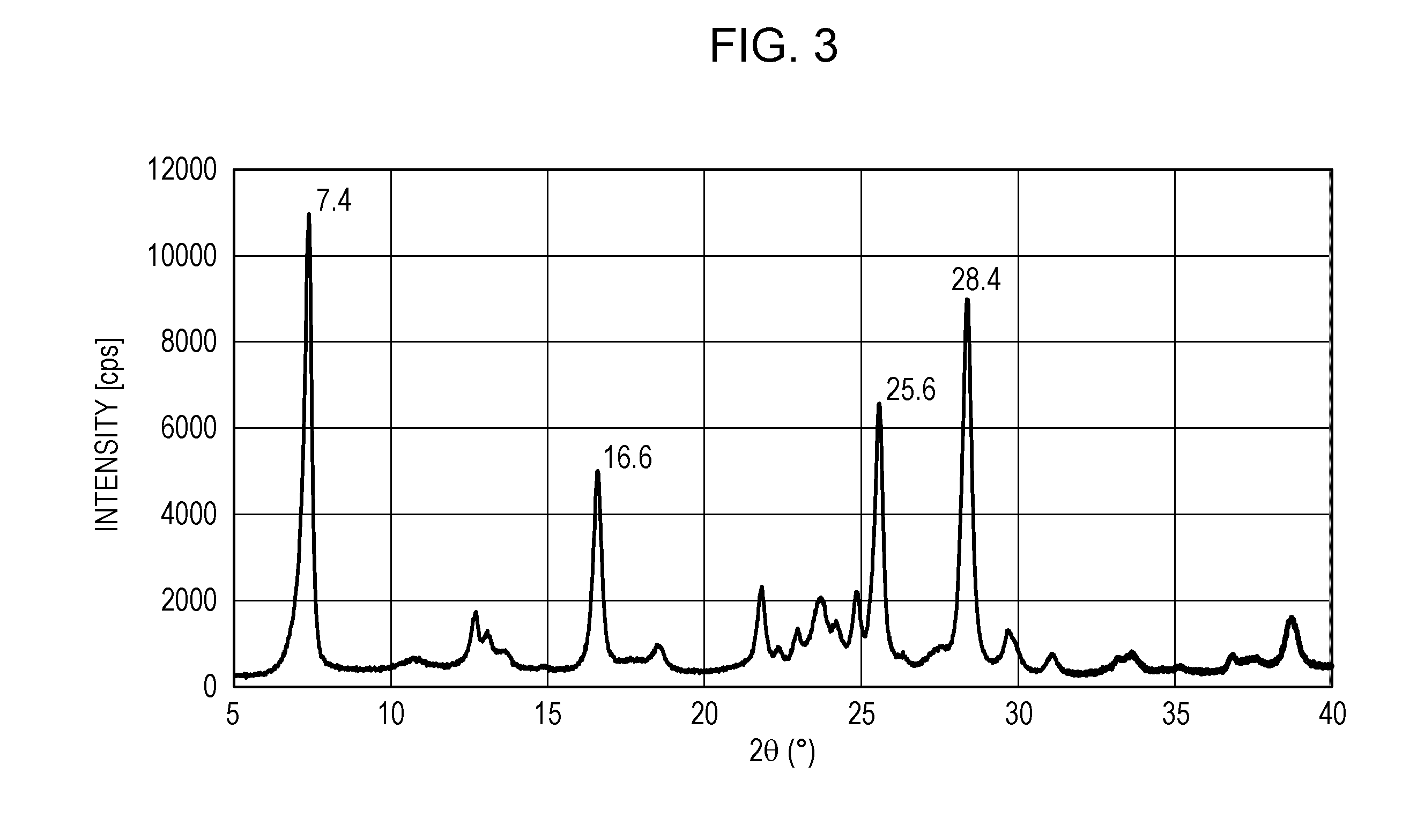Electrophotographic photosensitive member, process cartridge, and electrophotographic apparatus
a photosensitive member and electrophotography technology, applied in the direction of electrophotography process apparatus, coatings, instruments, etc., can solve the problems of reduced image density and increased image defect risk
- Summary
- Abstract
- Description
- Claims
- Application Information
AI Technical Summary
Benefits of technology
Problems solved by technology
Method used
Image
Examples
examples
[0105]The subject matter of the present disclosure will be further described in detail with reference to specific examples. It is however not limited to the disclosed examples. The thicknesses of each layer of the electrophotographic photosensitive members of the Examples and Comparative Examples were determined by measurement using an eddy current thickness meter Fischerscope (manufactured by Fischer Technology) or by calculation using specific gravity and mass per unit area. In the following description, the term “part(s)” refers to “part(s) by mass” and “%” refers to percent by mass.
Synthesis of Gallium Phthalocyanine Pigment
synthesis examples 1
[0106]A reactor was charged with 5.46 parts of phthalonitrile and 45 parts of α-chloronaphthalene and was then heated to and kept at 30° C. in an atmosphere of nitrogen flow. Subsequently, 3.75 parts of gallium trichloride was added at this temperature (30° C.) to the reactor. The water content in the resulting mixture was 150 ppm. Then, the mixture was heated to 200° C. Subsequently, the mixture was subjected to a reaction at 200° C. for 4.5 hours in an atmosphere of nitrogen flow, followed by cooling to 150° C. Then, the reaction product was filtered out. The resulting filtration product was dispersed in N,N-dimethylformamide for washing at 140° C. for 2 hours, followed by filtration. The resulting filtration product was washed with methanol and dried to yield 4.65 parts of a chlorogallium phthalocyanine pigment (yield: 71%).
synthesis examples 2
[0107]In 139.5 parts of concentrated sulfuric acid was dissolved at 10° C. 4.65 parts of the chlorogallium phthalocyanine pigment produced in Synthesis Example 1. While being stirred, the solution was dropped into 620 parts of ice water for precipitation, and the precipitate was filtered using a filter press. The resulting wet cake (filtration product) was dispersed in 2% ammonia solution for washing and then filtered using a filter press. Subsequently, the resulting wet cake (filtration product) was dispersed in ion exchanged water for washing and filtered using a filter press. This operation was repeated three times to yield a hydrous hydroxygallium phthalocyanine pigment having a solid content of 23%.
[0108]Subsequently, 6.6 kg of the resulting hydrous hydroxygallium phthalocyanine pigment was dried as below in a dryer HYPER-DRY HD-06R (product name, oscillation frequency: 2455 MHz±15 MHz, manufactured by Biocon).
[0109]The hydrous hydroxygallium phthalocyanine pigment in the state...
PUM
| Property | Measurement | Unit |
|---|---|---|
| average primary particle size | aaaaa | aaaaa |
| oscillation wavelength | aaaaa | aaaaa |
| Bragg angle 2θ | aaaaa | aaaaa |
Abstract
Description
Claims
Application Information
 Login to View More
Login to View More - R&D
- Intellectual Property
- Life Sciences
- Materials
- Tech Scout
- Unparalleled Data Quality
- Higher Quality Content
- 60% Fewer Hallucinations
Browse by: Latest US Patents, China's latest patents, Technical Efficacy Thesaurus, Application Domain, Technology Topic, Popular Technical Reports.
© 2025 PatSnap. All rights reserved.Legal|Privacy policy|Modern Slavery Act Transparency Statement|Sitemap|About US| Contact US: help@patsnap.com



